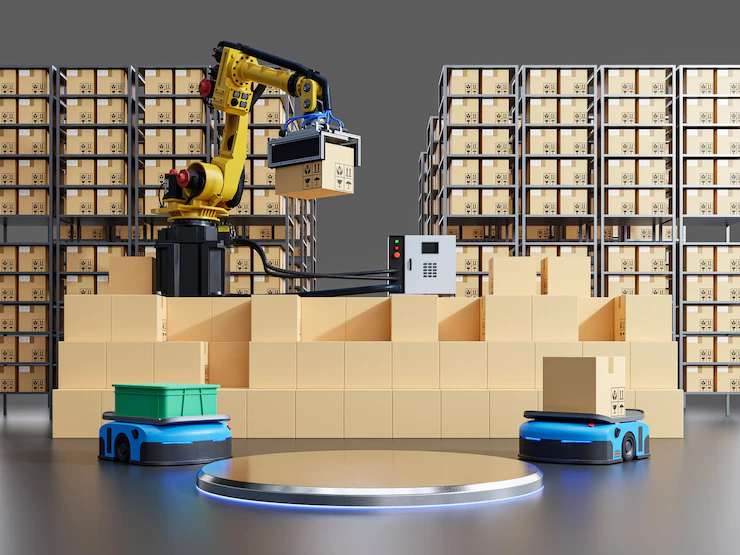Inventory carrying costs are an important part of business operations but are often overlooked. Fortunately, there are ways to measure and reduce your inventory carrying costs, giving you a competitive edge and freeing up cash flow for other investments. This article will provide a closer look at inventory carrying costs, explain how to measure them, and also offer some tips for reducing them. By understanding and reducing inventory carrying costs, businesses can improve their profitability and competitiveness. So keep reading to learn more!
Table of Contents
What is inventory carrying costs and why they’re important?
Inventory carrying costs are the expenses associated with holding inventory. These costs can include things such as the opportunity cost of capital, storage, and handling costs, and insurance premiums. Inventory carrying costs are important to consider because they can significantly impact a company’s profits.
Inventory carrying cost is composed of 4 categories:
- Capital costs: Amounts paid for the purchase of inventory or raw materials, as well as any related financing expenses (such as interest) Approximately 25 percent of total inventory value is accounted for by this cost category.
- Inventory service costs: The price of storing items in a warehouse, including the cost of inventory management software, hardware purchases, insurance, and government fees and taxes.
- Inventory risk costs: The risks of your inventory due to obsolescence, expiration or damage are high. In addition if you store items for too long in the wrong place their value may drop compared with what it was when they were first sold because people have less incentive not to buy something that is already out-of -date!
- Inventory storage space costs: The cost to purchase or rent warehouse space, move items in and out of the facility as well as pay for physical security can be extremely high. If we utilize third party logistics providers (3PL), then their rates could fluctuate depending how much volume there has been throughout this period but at least now I know what kind information will help me make an educated decision about hiring them.
In addition to the four categories of expenses listed above, there are opportunity costs, which are investments and improvements lost due to inventories. While concrete expenses like storage space rental are easy to assess, intangible expenditures like this opportunity cost are more difficult to define.
Inventory carrying costs are an important statistic that can help businesses to track their inventory more efficiently and reduce the amount of time and money spent on Inventory management. In fact, The presence of high carrying costs may indicate that your organization has more inventory on hand than it requires based on demand, that you need to change the frequency with which you make orders with manufacturers or distributors, or that you may improve your stock movement. Moreover, This software can automate many of the tasks involved in Inventory management, making it easier and faster to manage Inventory.
How to measure inventory carrying costs?
Carrying costs are the expenses incurred as a result of having inventory on hand. There are a few different ways to calculate carrying costs, so let’s take a look at each method.
The first way to calculate carrying cost is to use the formula:

This formula takes into account both the average inventory level and the unit cost of the inventory. It then divides those two figures by 365 days in order to get a daily carrying cost figure.
The second way to calculate carrying cost is to use the formula:
This formula takes into account both the annual inventory holding costs and the number of days in the year minus the number of days that the inventory is held. This figure gives you a per-day carrying cost.
Which method you choose to use will depend on your specific business needs. Whichever method you choose, it is important to track your inventory levels and associated costs so that you can make sound business decisions about your inventory. Carrying costs can be a significant expense, so it is important to make sure that you are aware of them and take them into account when making decisions about your business.
Ways to reduce inventory carrying costs
Inventory carrying costs are an important consideration for any business, and it’s important to take steps to reduce these costs as much as possible. By following these tips, businesses can reduce the amount of money they spend on inventory carrying costs. Reducing these costs can help businesses to become more profitable and competitive.
Minimize Inventory On Hand
One way to reduce inventory carrying costs is to minimize the amount of inventory you have on hand. This can be done by redesigning your warehouse so that it is more efficient, implementing an automated Inventory management system, or outsourcing your Inventory management functions.
Redesign your warehouse
If you have a lot of excess space in your warehouse, you are wasting money on unnecessary inventory carrying costs. Redesigning your warehouse can help to make it more efficient and reduce the amount of space you need for storage.
Speed Up Inventory Turnover Times
In order to reduce inventory carrying costs, you need to make sure that your Inventory is turning over as quickly as possible. This can be done by increasing sales, renegotiating with suppliers/customers, or streamlining your ordering process.
Renegotiate with Suppliers/Customers
If you can get your suppliers to reduce their prices or your customers to increase their order sizes, you can reduce your inventory carrying costs. Often, a small price concession on the part of the supplier or customer can result in significant savings for the business.
Use Just-In-Time Inventory Management
Just-In-Time Inventory management is an Inventory management system that eliminates the need for Inventory stockpiles. This system relies on suppliers delivering goods to the business just in time for them to be used. While this system can be more complex to implement, it can save businesses a lot of money in Inventory carrying costs.
Implement an automated inventory management system
Implementing an automated Inventory management system can help speed up Inventory turnover times and reduce the amount of time and money you spend on Inventory management. Automated systems can also help to prevent human error, which can lead to costly mistakes.
Odoo is one of the most popular inventory management systems available, and it is a perfect option for any business because of its comprehensive solution, fair pricing, and ease of installation. Inventory management software, such as Odoo ERP, allows users to handle and monitor a wide range of orders, including delivery orders, dropshipping orders, receptions, and requests for inventory goods. Furthermore, the unique modules support a variety of shipping companies, including UPS, DHL, FedEx, and even local post offices. Because of this feature, the process of controlling shipping operations is made much simpler and easier.
You won’t have to integrate any software to run all of the sectors in your company since Odoo will take care of everything for you.
Final thoughts on inventory carrying costs
The benefits of reducing inventory carrying costs are significant. By reducing these costs, you can improve your profits margins and free up cash flow. This can help you grow your business and make investments in new products and technologies. If you’re looking for a third-party development business to assist you with implementing Odoo in your corporation, please feel free to contact us. Being a silver partner of Odoo with lots of experience and successful projects, we can provide you with the best solution for your inventory management requirements. Our team of experts would be happy to share our knowledge and help you make the most informed decisions for your business.
















